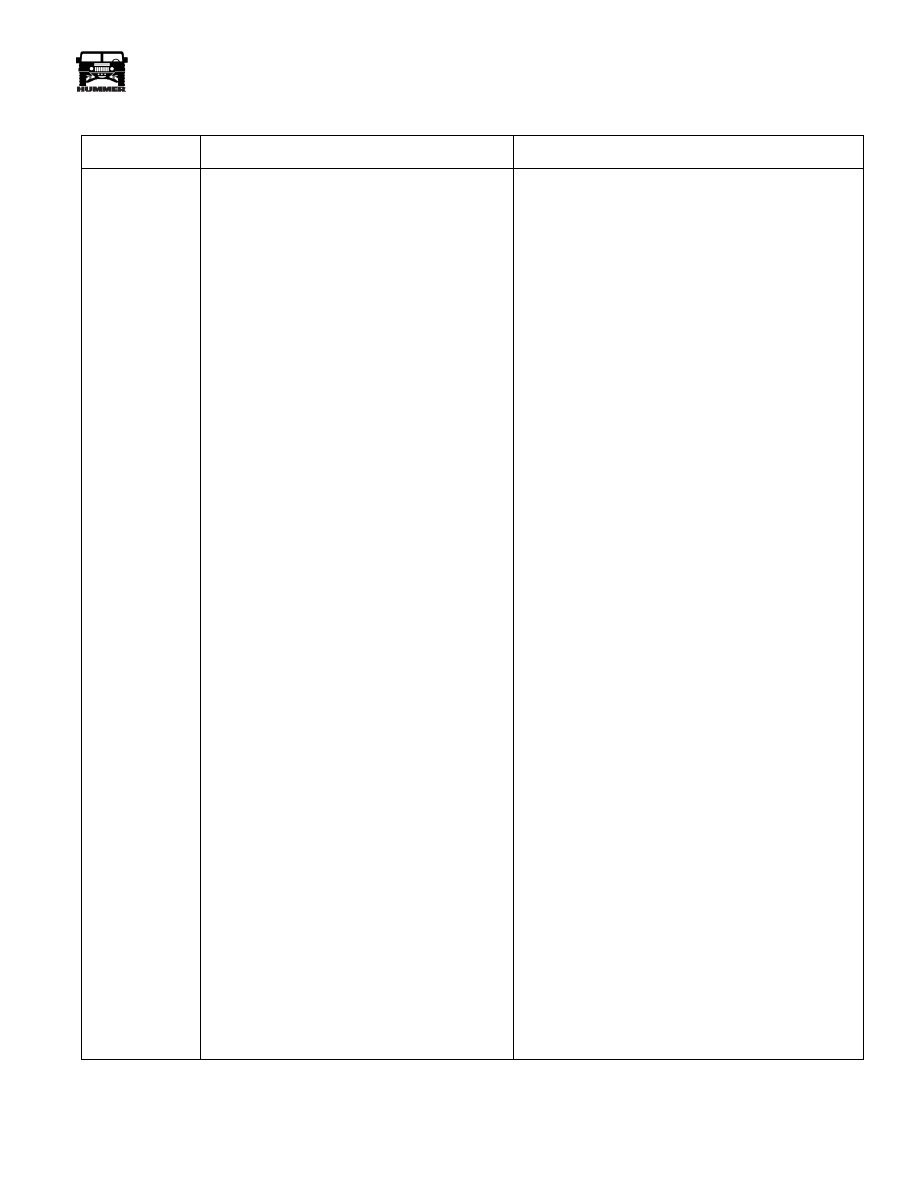Hummer H1 (2002+). Manual - part 37

____________________________________________
Fuel, Emissions, and Exhaust 3-9
®
5745159
Low Power,
Sluggish Accel-
eration
1.
Contaminated or low-quality fuel.
1.
Drain, flush, and refill fuel system.
2.
High fuel temperature.
2.
Normal condition in high ambient.
3.
Restriction in air intake system.
3.
Remove and clean filter, housing, weathercap,
hose, air horn.
4.
Fuel tank vent or return line restriction.
4.
Clear restrictions, replace lines.
5.
Exhaust system restriction.
5.
Inspect entire system for damage and repair as
needed. If vehicle is used for off-road operation,
look for kinking, bent, or flattened pipes or
muffler.
6.
Air leak at injector or line.
6.
Tighten loose fittings or replace lines if necessary.
7.
Brake drag.
7.
Inspect brake components. Look for seized or
binding caliper piston, master cylinder problem, or
failed hydro-boost.
8.
Torque converter problem. Overrunning
clutch failure, or converter clutch binding, or
slipping. Either fault will cause high fuel
consumption and require more than normal
throttle opening for acceleration.
8.
Test operation with scan tool. Use snapshot mode
to record maximum data. Replace converter if
either clutch is damaged.
9.
Engine compression low.
9.
Run compression test. Repair valves, cam, chain,
rings as needed.
10. Injection pump mistimed.
10. Check and correct pump timing. Replace either
pump gear if damaged.
11. Turbo diesel electronic accelerator fault such
as short, ground, loose connection indicate
potentiometer failure.
11. Check pedal potentiometer wires and connections.
Test with scan tool if check throttle light is on.
Repair wiring, or replace pedal assembly.
12. One or more injectors failing.
12. Remove and test injectors. Replace faulty injectors
as needed.
13. Air leak at intake manifold.
13. Locate with soap and water solution (or oil).
Tighten bolts, replace gaskets, or replace manifold
if required.
14. Turbocharger inoperative or no boost.
14. Check boost output. Replace wastegate actuator if
leaking. Repair vacuum line if damaged. Replace
turbocharger if compressor or turbine wheel vanes
are broken, chipped, or if compressor shaft is
seized/broken.
15. Sensor failure (coolant or air temp, baro or
boost sensors, etc.).
15. Locate with scan tool. Test with multimeter and
replace as needed.
16. PCM signal voltage too low.
16. Check battery voltage and generator output. Repair
or replace parts as needed if voltage is below 10, or
above 16.
17. Injection pump fault.
17. Replace pump.
Fuel System Diagnosis—Diesel Engine
PROBLEM
POTENTIAL CAUSE
CORRECTION